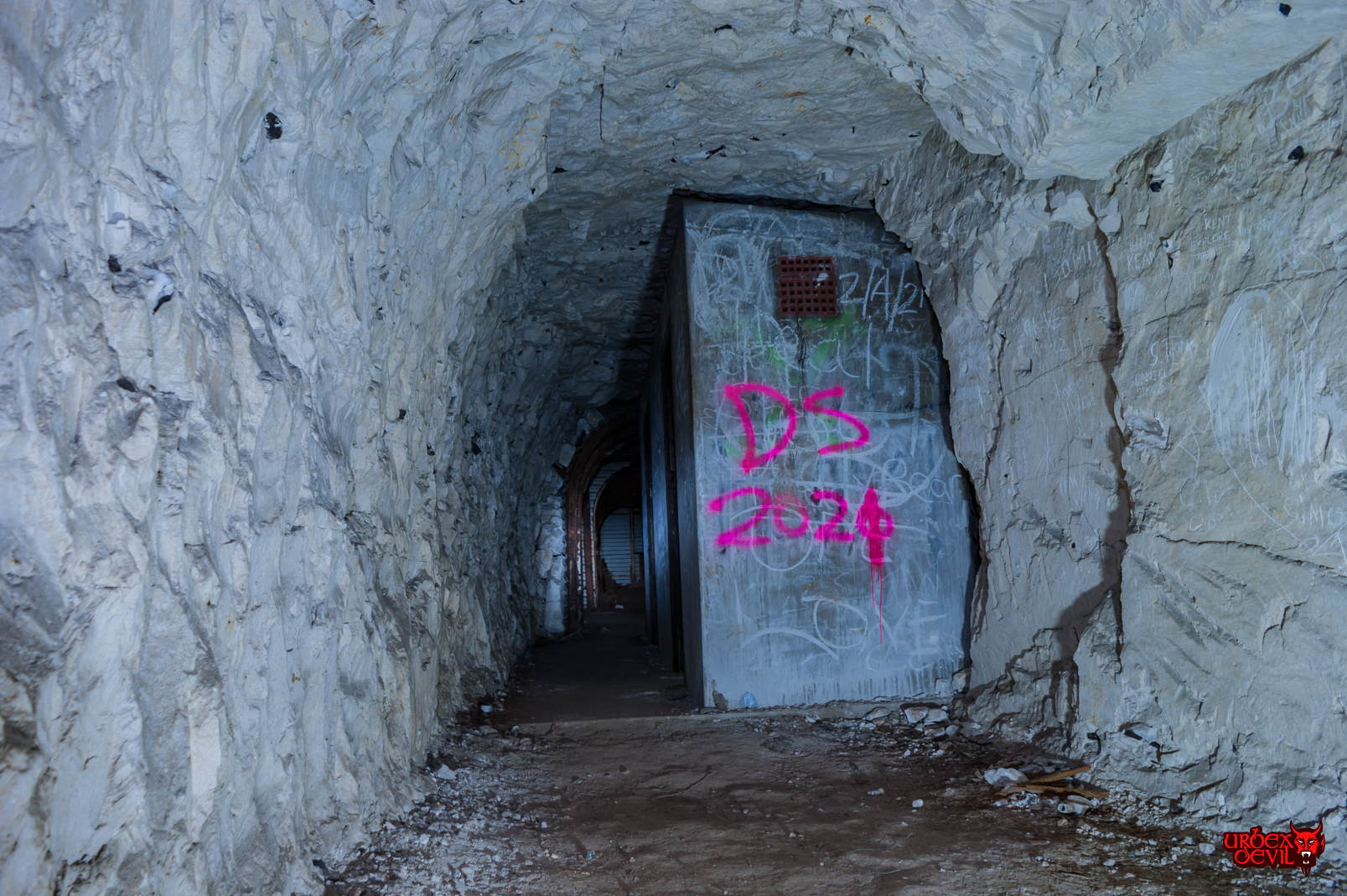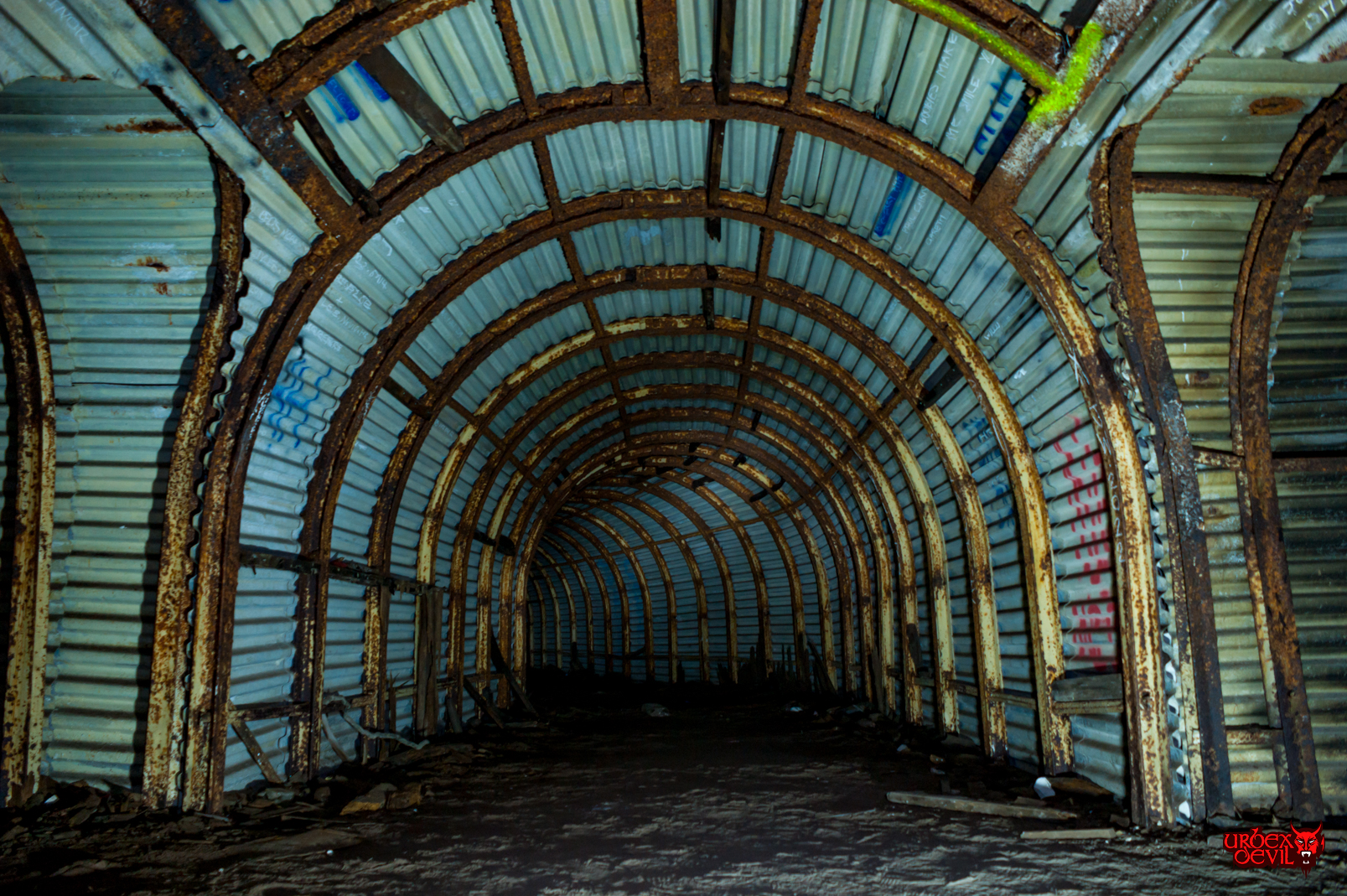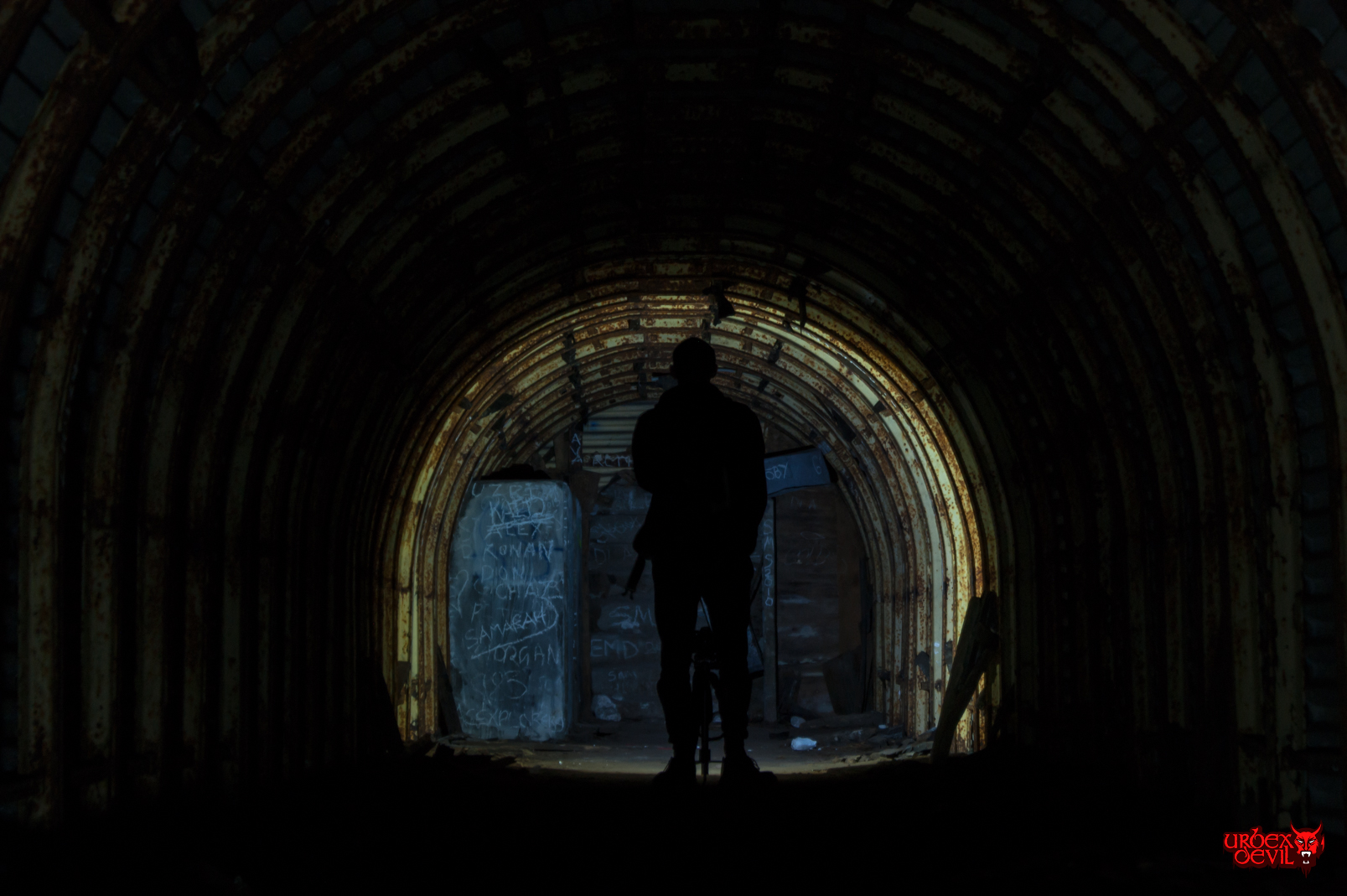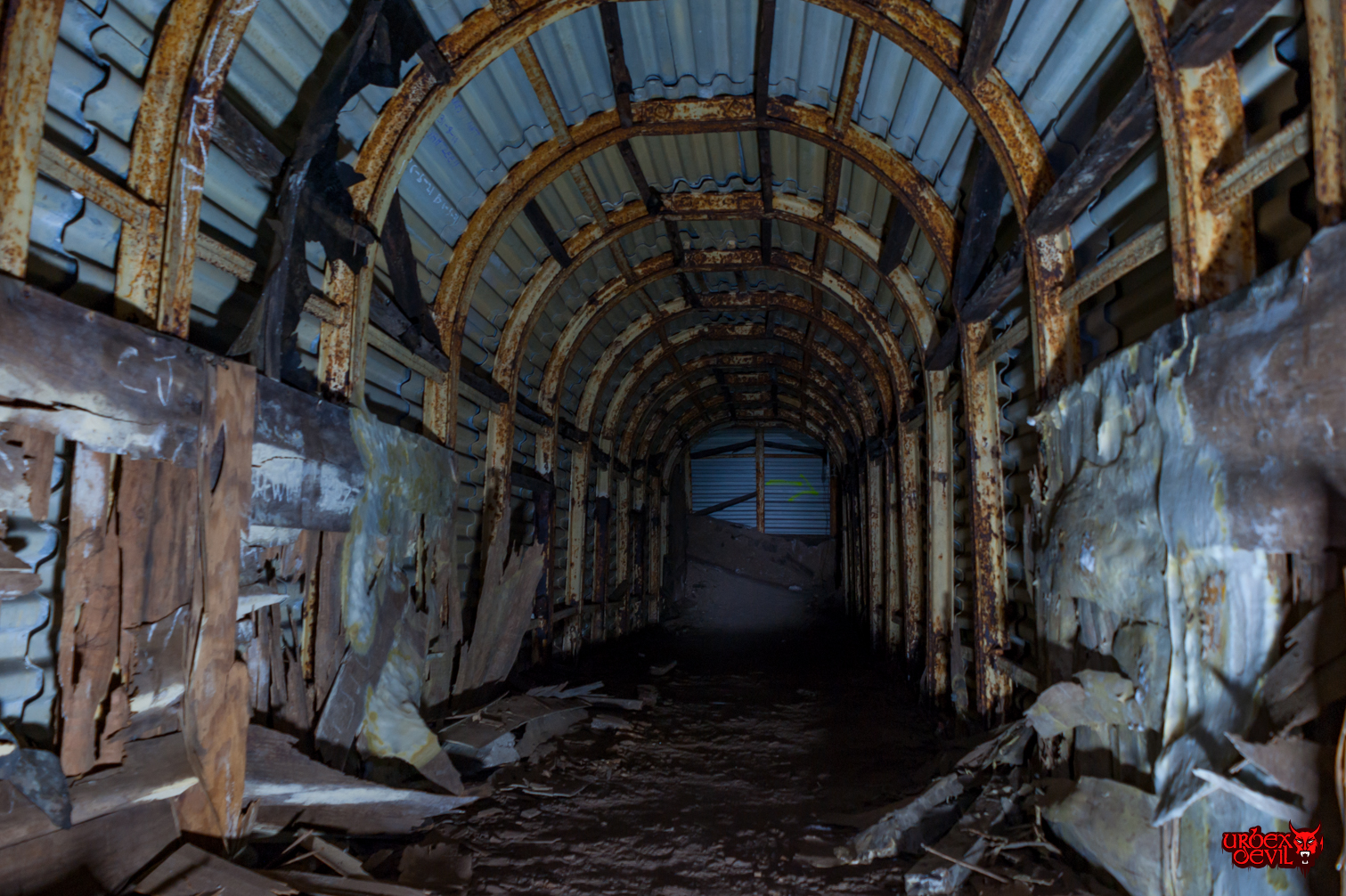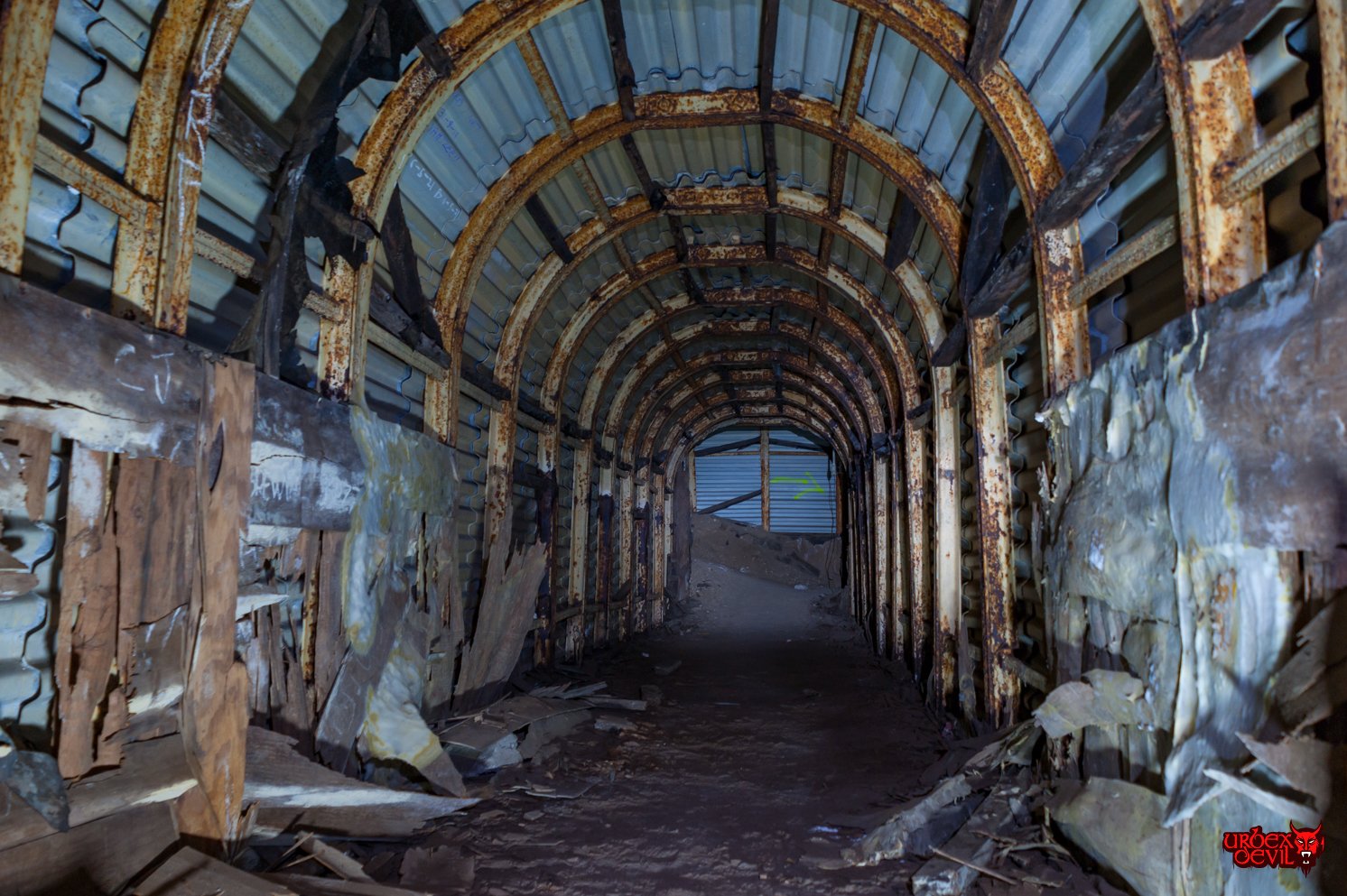Knowing this was here but not knowing where to look, saw us another trip across the country to Dover to check out a deep level shelter with the most fun yet potentially dangerous entrance.
Locating the entrance to this place very quickly and feeling slighty embarrassed about not knowing where this place was on a previous visit we made our way down the access slope using the handy lengths of rope left from previous explorers to abseil with.
The descent itself was relatively easy with only the odd slip here and there on the dusty surface. Though I can confirm the slide of death with an easy 200ft drop straight out of the cliff side is still at the bottom of the slope with only a flimsy piece of metal to stop any accidental falls down the entrance slope. Bare this in mind if anyone decides to visit!
The shelter itself seems to be in the exact state it was in other urbex reports going back 10 years ago which was a nice boost to the confidence of the chance of collapse while inside. Although it always pays to be careful!
History below “yoinked” from a 28 Days Later post which was also yoinked from Subbrit
The battery at St Margaret’s was one of the earliest to be established in the Dover area. Its four 5.5″ guns came were former naval guns, coming from the secondary armament of the battlecruiser HMS Hood, replaced during a refit. They were thus spared the fate suffered by the Hood itself when she fell victim to the Bismarck in May 1941 during the Battle of the Denmark Strait. The guns however were soon outclassed by the heavier guns of nearby batteries at South Foreland, Wanstone and Fan Bay (9.2”, 15” and 6” respectively), and it was later used to decoy enemy shipping to change course and come into range of neighbouring batteries.
The battery was manned by four officers and 165 men of the 411 Bty Coast Defence, and to provide protection a deep shelter was dug for them by the Royal Engineers 171 Tunnelling Company. This had three entrances, two behind the guns which are now covered over, and a third close by the cliff edge. The first two lead 20m or so down to the shelter which consists of two roughly parallel tunnels, kinked at about 45 degrees for an unknown reason, which are linked by four short cross tunnels one of which is wider to allow it to be used as a medical station. These are lined with corrugated steel sheeting supported by colliery hoops in a similar manner to the other Dover gun battery deep shelters.
From the shelter a long unlined tunnel runs towards an opening in the cliff face where spoil could have been dumped onto the beach below during excavation. This is also the point where it meets a passage running down from the third entrance, which may have acted as an emergency escape.



